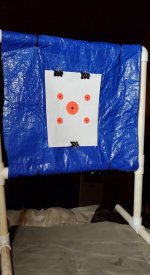5 times is my maximum for .308 in an M1A. You need to bump that shoulder substantially for reliable operation. The action is inherently violent and case head separation, not split necks, is the primary concern. RCBS makes an X-Die sizer that requires less trimming, so it should extend the brass life. I just never cared to test it.
.45-70 brass lasts me until I lose it.
I am not sure about cartridges like .270 Winchester shot in one, dedicated rifle. I used to neck size only until cases were difficult to chamber, then did a full resizing. More recently I’ve been bumping the shoulder only .002” with a full length sizing die. My sense is that these cases could go a lot further before annealing or tossing them.
It really depends on how your M1 or M1A is chambered, .7.62x 51 versus .308 Win, the brass you are using, and how you are resizing them.
For example I had an M1 in 7.62x51 and the generous chamber dimensions really stretched the brass on the initial firing, which all by itself shortened case life.
I used older military match brass exclusively (as the older LC match shared the thicker case web of the M80 brass), and kept that brass separate and dedicated to that particular rifle. It meant I could just partially size it without bumping the shoulder back and still get reasonable case life (around 7).
The M1 and M1A have a great deal of energy when the slide closes and will bump the shoulder back any small amount that might be required.
When using once fired M80 brass I have encountered some brass fired in an obviously excessive head spaced chamber where even small base resizing will not produce a case that will chamber in an M1A. I just throw it away, and as a general rule avoid mil surp once fired M80 brass.
My Springfield M1As and the barrels I have put on them over the years have always had chambers cut for .308 Win. On those rifles I will either full length resize or small base resize, depending on what gave the best accuracy. With the military match brass case life was very good with FL resizing and still ok (around 7) with small base resizing.
More recently I have used commercial Federal Gold Medal Match or newer military match brass which is the same thing since federal has been running the Lake City arsenal.
Those commercial .308 cases with their thinner webs do have quite short case life when fired and excessively stretched in a 7.62x51 chamber. But as noted in my prior post I have never had a complete head separation that did not fully extract and eject. My conclusion is the complete separation occurs late enough in the ejection cycle that the front portion of the case is also ejected.
That’s all based on about 35 years of M1A shooting and hand loading with between 5000 and 10000 rounds per year in my competition days.
——
As rough as the ejection cycle is on a case in a Garand or M1A, it’s a lot better than was the case in the M37E1 and Mk 21 machine guns with their often improperly adjusted head space and the M60 with its constantly growing headspace. They were the reason the 7.62x51 got a thicker web than the .308 Win in the first place.


